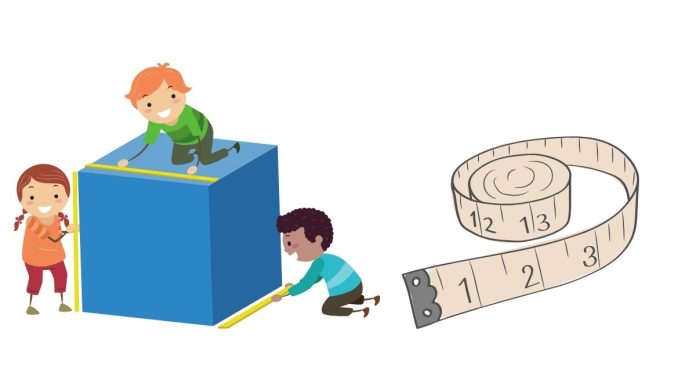When writing measurements for dimensions such as length and width, the typical format is “Length x Width”, but the specifics can depend on context, convention, and the type of object you’re measuring. Here’s a deeper dive into this concept, including when and why this format is used, how to apply it accurately, and any possible variations:
1. Why Use “Length x Width”?
The convention of writing “Length x Width” exists primarily to ensure consistency and clarity in communicating the size of objects or spaces. This standard notation helps people immediately understand how large or long an object is in two dimensions (length and width), especially when you’re dealing with rectangular or square shapes. The term “Length” is used for the longer dimension, while “Width” is for the shorter one.
2. The Order: Length First, Then Width
- Length First: When writing dimensions, the longer dimension (length) is typically written first, followed by the shorter dimension (width). This convention allows easy and consistent understanding.
- Example: A table that is 6 feet long and 4 feet wide would be written as “6 ft x 4 ft”.
- Why “Length” First? This order is intuitive because people often think of the longer dimension first when describing something. It also aligns with the way measurements are typically written in various fields, including design, architecture, and construction.
3. What Is Length vs. Width?
- Length is the longest side of an object or space.
- Width is the shorter side, typically perpendicular to the length.
This distinction helps in measuring and describing objects in a uniform manner, especially when the object is rectangular, which is the most common shape for describing dimensions.
For Example:
- A rug might be 6 feet long and 4 feet wide: “6 ft x 4 ft”.
- A room could be 12 feet by 8 feet: “12 ft x 8 ft”.
However, in certain contexts, people may reverse the dimensions (listing width first), but this is less common.
4. Special Cases:
- Square Shapes: For square objects, the width and length are the same, so you may see dimensions like “5 ft x 5 ft”, or simply “5 ft”.
- Three Dimensions: For three-dimensional objects, you often see dimensions expressed in the format Length x Width x Height (or Depth in some contexts).
- Example: A box might have dimensions “6 ft x 4 ft x 3 ft” for length, width, and height, respectively.
- Architectural and Engineering Contexts: In architectural and engineering drawings, it’s crucial to adhere to this format for precision and clarity, especially when dealing with plans, blueprints, and other technical documents. These documents often include detailed specifications where this convention is critical.
5. Using Units:
- Units of Measurement: It is important to use consistent units (such as feet, inches, meters) when expressing dimensions. You may specify dimensions in a variety of units, depending on the region or the context:
- “6 ft x 4 ft”
- “2 meters x 1 meter”
- “24 inches x 36 inches”
6. Using “x” vs “×”:
- The symbol used between the length and width can vary depending on the context, but both formats are acceptable.
- “x” (lowercase) is commonly used in general writing or informal contexts, such as “6 x 4 ft”.
- “×” (multiplication sign) is often used in technical writing, design, and engineering documents, such as “6 × 4 ft”. This is considered more formal.
7. Examples of How “Length x Width” Is Used:
- Room Dimensions: A room that is 10 feet long and 12 feet wide could be described as “10 ft x 12 ft”.
- Furniture: A sofa might be 7 feet long and 3 feet wide: “7 ft x 3 ft”.
- Paper Sizes: A sheet of standard letter-sized paper measures 8.5 inches x 11 inches.
8. Variation by Context:
- Clothing: When measuring clothing dimensions (like a shirt or pants), the convention can vary. Some manufacturers may list waist x inseam for pants, but for items like a table or a room, Length x Width is the most common order.
- Maps: For maps or plots of land, dimensions might be listed as width x length, but the reverse can still be common, depending on the preference of the individual or industry.
9. Other Considerations:
- Measuring Irregular Shapes: For irregular or non-rectangular shapes, the terms length and width might not apply as neatly. Instead, you may describe the dimensions in terms of perimeter, diameter, or other measurements (like radius for circular shapes). However, for rectangles and squares, the length and width convention holds.
10. Summary of Key Points:
- Length is typically the longer dimension, and Width is the shorter dimension.
- Write measurements in the format “Length x Width”, separating the dimensions with “x” or “×”.
- Always include units of measurement (e.g., feet, inches, meters).
- This format ensures clarity, especially when describing common rectangular objects like rooms, tables, or sheets of paper.
In conclusion, yes, when writing measurements for length and width, the typical convention is “Length x Width”, and following this standard ensures your dimensions are universally understood. Whether you’re describing furniture, spaces, or other objects, this format is essential for clear communication.


